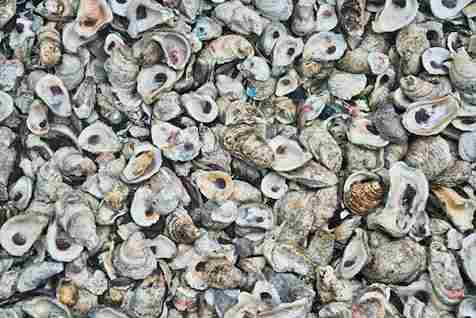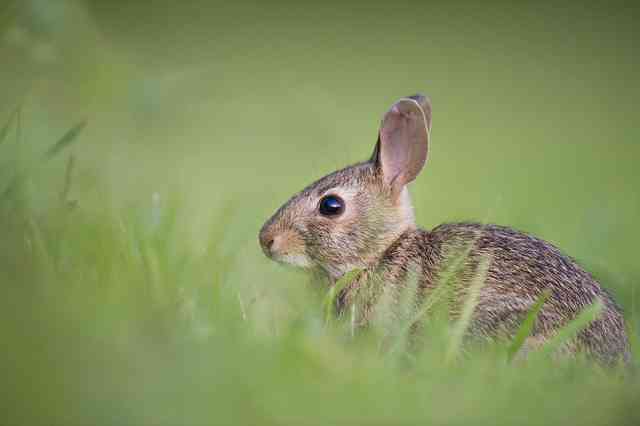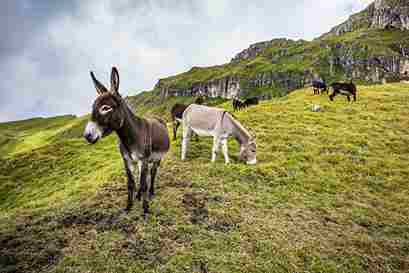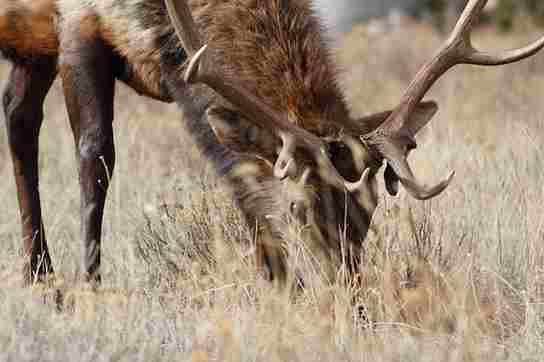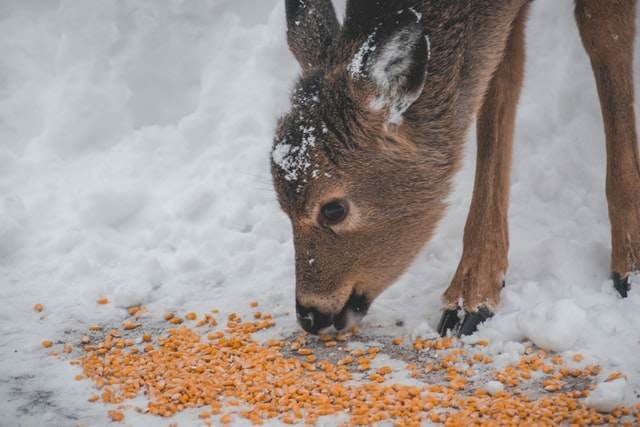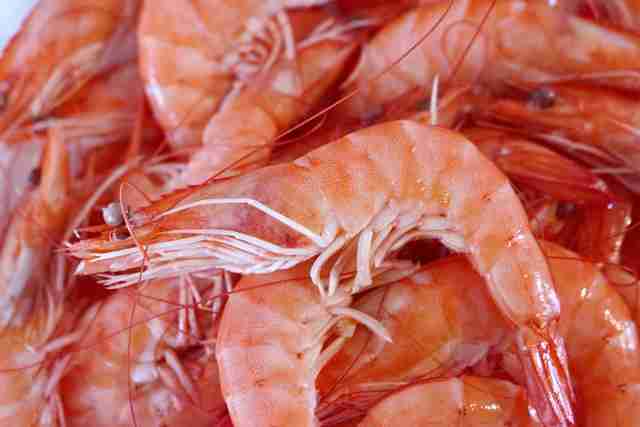Are Coyotes Native to Florida? (EXPLAINED)
For residents in Florida, Coyotes are a very common sight. In fact, their presence has been reported in all counties in the state. Given their huge numbers, you may be wondering – are coyotes native to Florida?
Despite their widespread presence in the state, coyotes are not native to Florida.
Coyotes were first introduced to Florida in the 70s and are believed to have expanded from the Western states. Today, they are widespread in every state except Hawaii.

What Are Coyotes?
Canis latrans, popularly known as coyote, brush wolf, or prairie wolf, is a canine species native to North America. They are medium-sized, weigh about 25-45 pounds, and have different colors (e.g. dusty brown, silver, grayish, black, etc).
- Vocalization: Coyotes can produce different sounds, though their shrills, yips, and howls are more commonly heard. They can also bark like dogs. In fact, their scientific name, Canis latrans, literally translates to “barking dog.”
- Connection with dogs: As earlier indicated, Coyotes belong to the family Canidae, which also includes the domestic dog, foxes, and wolves. However, unlike dogs, coyotes are more active after sunset and at night.
- Night vision: Coyotes can be regarded as good night hunters and usually hunt alone, but sometimes may hunt in groups like their relative, wolves. Their good night vision makes things even easier.
NB: It should be known that coyotes are not exclusively nocturnal; they can also be active during the day. In general, they choose to move about at night to avoid humans.
Are Coyotes Native to Florida?
As earlier indicated, coyotes are not native to Florida or the eastern US. Instead, they come from North America.
The first record of a coyote in Florida was actually in the 1970s. Ever since they have spread across the state and can be found in all 67 counties. They are now regarded as a naturalized species.
Where do coyotes come from?
North America is considered to be the birthplace of coyotes. According to Kurten in 1980, the evolution of coyotes can be traced back to an extinct type of small omnivorous fox-like canid endemic to North America 10.3—3.6 million years ago.
It is also believed that, nearly 2 million years ago, during the Pleistocene era in North America, modern coyotes evolved from a wolf-like canid.
Coyotes were very populated in the arid and flatlands of central and middle portions of North America prior to European colonization.
How did coyotes get into Florida?
Coyotes are said to have made their way into Florida in the 1970s, most likely via the southern United States. They are believed to have expanded their range into the Eastern United States from the West.
The growth of human civilization and the establishment of new habitats played a key role in their migration.
Coyotes are extremely adaptive and can live in many different types of habitats. Currently, they are found in almost all parts of the United States except in Hawaii.
Why were coyotes brought to Florida?
Although some researchers believe that coyotes were brought into Florida in the early 1900s to train hunting dogs, there is not enough evidence to back up this claim.
On the other hand, most people believe that coyotes were not intentionally introduced into Florida; instead, they migrated from western states and established themselves in Florida. Today, they are very much a part of the state’s ecosystem.
Are coyotes invasive to Florida?
According to the Florida Fish and Wildlife Conservation Commission, FWC, coyotes are considered to be naturalized to Florida and are not invasive. This is because they were not introduced to the state by human means and have naturally expanded their range from the West.
In contrast, coyotes are seen as natural wildlife in Florida and are considered permanent residents in the state.
Are coyotes a pest in Florida?
In Florida, coyotes are not considered a pest. Rather they are predators and help to reduce the population of insects and rodents in the state. Although they are opportunistic omnivores, they are relatively harmless to humans.
Are coyotes protected in Florida?
In Florida, there are no specific regulations that protect coyotes. As a matter of fact, it is legal to hunt coyotes at any time of the year. However, coyotes are considered as game species and these species are regulated by the Florida Fish and Wildlife Conservation Commission, FWC.
Coyotes are fur-bearing animals and are seen as fair game to professional hunters. To hunt coyotes in Florida, you’ll need an active hunting license issued by the FWC. Additionally, you’ll also need a permit from the FWC to use a steel trap, such as a leg-hold trap, to hunt them.
Are Florida Coyotes dangerous?
Florida coyotes, just like every other wild animal, can be a threat. They can be very dangerous to small pets and little children. However, their attacks on humans are very uncommon. Notwithstanding, they should be avoided or treated with caution.
Despite their intelligence, coyotes are naturally timid and are less likely to charge at humans. If you encounter any of them, don’t waste any time; begin hazing. In other words, rather than turning your back or trying to get away, make yourself big and be as loud as possible.
To keep them away from your property, ensure you don’t keep garbage or food substances that could attract them. Also, keep your pets indoors at night.
Can you shoot coyotes in Florida?
Absolutely! As long as you have landowner permission or an active hunting license, shooting coyotes is completely legal. However, it is very important to take note of the legality of shooting firearms in specific locations.
According to Florida’s laws, it is completely legal to discharge a firearm within the boundaries of your home, provided that the bullets do not cross your property line. However, shooting coyotes in public areas is not allowed as this can pose a threat to the people in the area.
Where do coyotes sleep in Florida?
Coyotes generally sleep in dens during pup season. These dens usually consist of holes dug by other animals, such as raccoons or skunks, or by themselves.
They may also sleep in locations that are non-commercial or residential such as rock outcrops, prairies, parks, hollowed-out trees, and stumps. As earlier indicated, coyotes are usually more active after sunset and at night, which accounts for the howling sounds often heard at night.
Other Related Questions
Are there coyotes in South Florida?
Yes, coyotes have been spotted in many parts of South Florida, such as Palm Beach, Weston, and other cities.
How large are Florida’s coyotes?
This depends on the age and gender of the coyote. In general, coyotes in Florida are medium-sized, with an average weight of 28 pounds. Their average size is about 37-50 inches long and 18-24 inches high. Older coyotes are usually bigger than the younger ones, while male coyotes are bigger and weigh more than females.
Are Florida coyotes aggressive?
Florida coyotes are generally not aggressive towards humans, but they can become aggressive if they feel threatened or are defending their young ones. It’s important to give them plenty of space and to avoid approaching them or their dens. If you encounter a coyote, you can yell or wave at it aggressively till it leaves the area.
How high can Florida coyote jump?
The exact height Florida coyotes jump is unknown, but in general, coyotes are known to be quite agile and can leap over fences that are 4-7 feet high. In fact, some records show that certain coyotes can leap above 8-10 feet if they are running.
Is it legal to shoot a coyote in Florida?
It is completely legal to shoot a coyote in Florida if you have a hunting license and follow the hunting guidelines and regulations. Also, you can shoot a coyote found on your property if you have a landowner permission. Other than that, you need to be careful when discharging your firearm in certain places as the local regulations might not permit it.
Conclusion: Are coyotes native to Florida?
In conclusion, coyotes are not native to Florida. They seem to have expanded from the Western United States. While they are generally not aggressive towards humans, it’s important to treat them with care to avoid conflicts and keep them from becoming too comfortable around your property.
